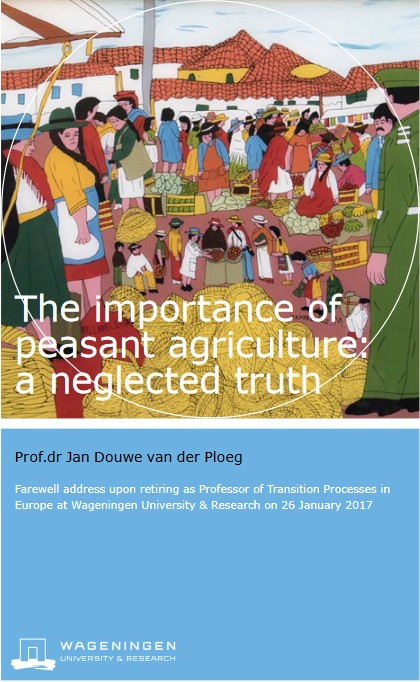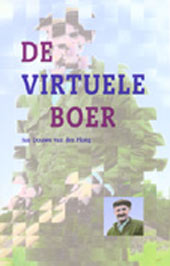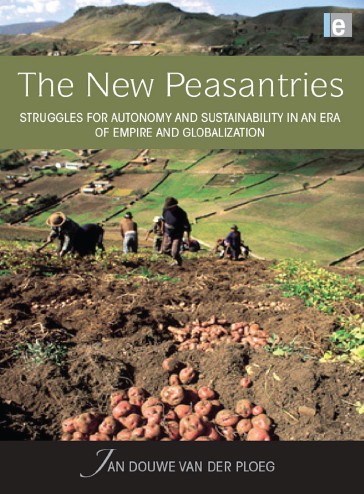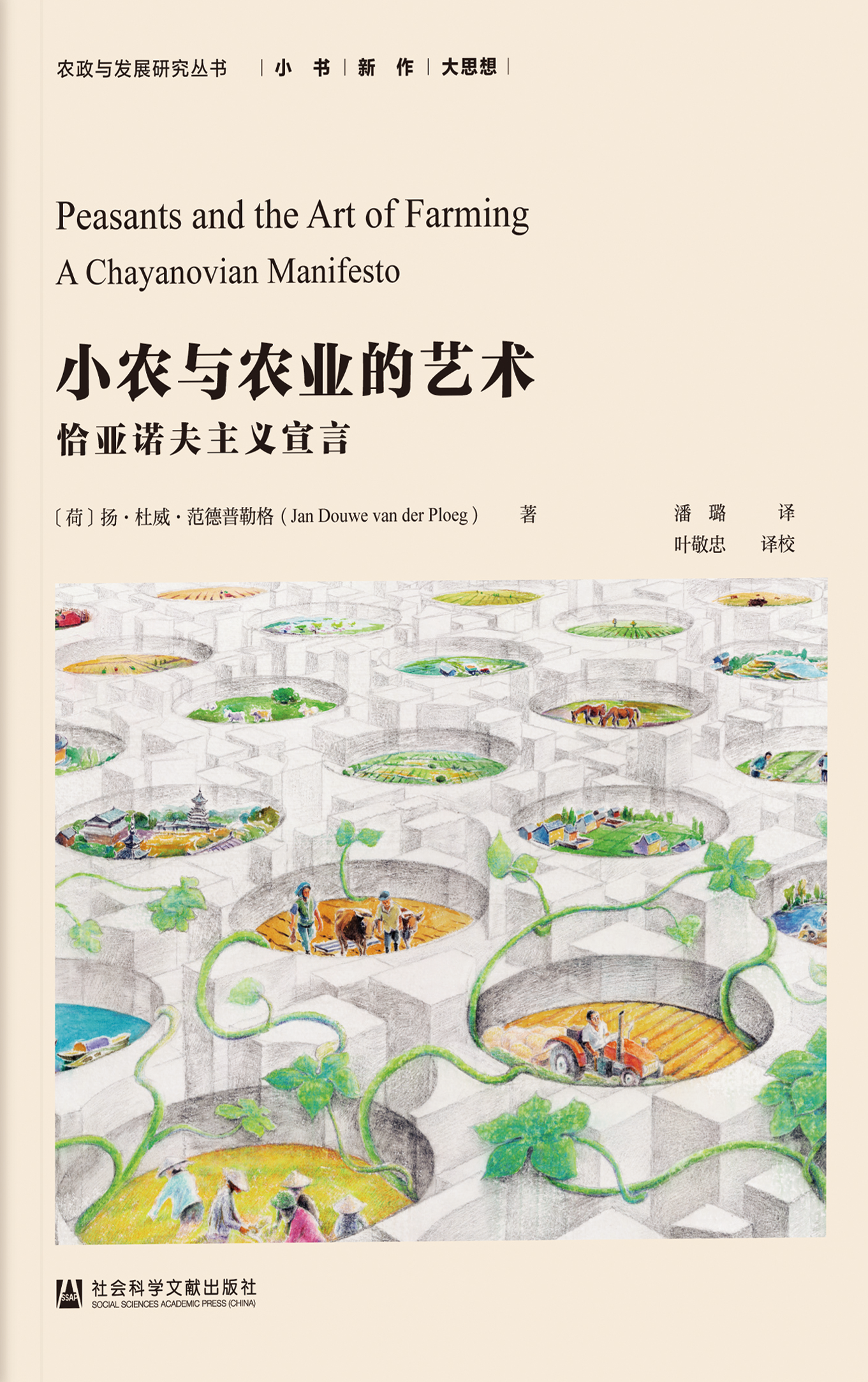DEALING WITH NOVELTIES
Dealing With Novelties: a Grassland Experiment ReconsideredJAN DOUWE VAN DER PLOEG*, PIET VERSCHUREN**, FRANK VERHOEVEN* & JOSE´ PEPELS*
*Department of Rural Sociology, Wageningen University, Wageningen, The Netherlands
**Department of Management Studies?, Universities of Nijmegen and Utrecht, The Netherlands
ABSTRACT This article discusses a controversy that arose out of a grassland experiment in the Netherlands. Using the same data, one group of farmers and scientists concluded that a newly developed trajectory towards sustainability in dairy farming was highly effective, whilst a second group of scientists linked to the Research Institute for Animal Husbandry (PR) concluded the opposite. This article seeks to disentangle this controversy and, in so doing, discerns three levels of discussion. The first regards the understanding of agricultural processes of production as constantly changing practices. Here the concepts of co-production and novelties are introduced. The second level regards the methods for research design and analysis. Thirdly, there is the level of institutionalized research routines. These routines come down, amongst other things, to more or less standardized research questions, hypotheses and methods. Basically, level three contains a specific, and necessarily narrow, selection of concepts and methods from the first and second levels. The question, though, is whether such a selection is in line with markedly changing practices in agriculture. The article concludes that institutionalized research routines are unable to represent, understand and support novel and promising practices correctly.
KEY WORDS: Grassland production, manure, novelties, field laboratories, environmental co-operatives
Co-production and the Importance of Novelties
Agricultural production can be conceptualized in different ways. Within the currently dominating paradigm, agricultural processes of production are understood basically as the (more or less optimized) unfolding of natural and economic laws encapsulated in different subsystems (land, cattle, crops, water, markets, etc.) which together make up the agricultural system of production (Wit, 1992). These ‘underlying’ laws, identified by scientists, are assumed to govern the behaviour of these resources. It is assumed that they do so independently of time and space— i.e. that they are universal laws (Koningsveld, 1987; Ploeg, 1987, 2003; Vijverberg, 1996).
Contrasting with this view is the agro-ecological or constructivist approach in which agriculture is understood as co-production of humans and living nature. Agriculture, then, represents the ongoing combination, interaction and mutual transformation of social and material resources. Thus, agriculture is being differentiated and transformed constantly (Altieri, 1990; Sevilla Guzman & Gonzalez, 1990; Toledo, 1992). New constellations emerge, containing remoulded resources and new combinations of resources. Hence, ‘nature’ as entailed in farming is “not the one from Genesis” as Koningsveld (1987) beautifully phrased it. Instead, ‘living nature’ is constructed, reconstructed and differentiated within long and complex historical processes, through which particular characteristics are built into the resources concerned (be they horses, cows, fields, crops or manure; Groen et al., 1993; Sauvant, 1996; Seabrook, 1977, 1994; Smeding, 2001; Sonneveld, 2004; Wiskerke, 1997). Thus, particular regularities emerge that characterize the behaviour of the involved resources. These patterns of regularity are neither fixed nor universal: they might be modified, at particular conjunctures in time, into other, possibly even contrasting, regularities (Groot et al., 2003; NRLO, 1997; Ploeg, 2003).
In theoretical terms this implies that the behaviour of natural resources cannot be understood properly outside the pattern of land use (or style of farming) within which they are combined (according to a particular balance) and through which they are reproduced, developed and particularized into distinct entities that fit optimally with the other entities that form part and parcel of the same land-use pattern (Ploeg, 2003; Sonneveld, 2004). Concrete resources are the outcome of co-production: they are shaped and reshaped in and through the constantly evolving interaction between humans and nature. That is, co-production feeds back on the resources on which it is built. Farming is not a uni-directional process. It is not simply based on resources, but entails also feedback effects through which the involved resources are unfolded in differentiated ways.
Novelties are located on the borderline that separates the known from the unknown. Novelties often are the vehicle of changing co-production. A novelty is something new: a new practice, a new insight, an unexpected but interesting result. It is a promising result, practice or insight (Wiskerke & Ploeg, 2004). At the same time, novelties are, as yet, not fully understood. They are deviations from the rule. They do not correspond with knowledge accumulated so far— they defy, as it were, conventional understanding. Novelties go beyond existing and explained regularities. A novelty contains the promise of shifts in the established patterns of co-production (a more extended discussion of novelties is provided in Ploeg et al. (2004) and Milone (2004); empirical illustrations are given in Swagemakers (2002), Roep (2000), Wolleswinkel et al. (2004) and Scetri (2001)).
Download whole article in pdf: click here






NEW
Jan Douwe van der Ploeg
Formerly Professor and Chair of Rural Sociology and Emeritus professor of Transition Studies at Wageningen University (WUR), the Netherlands and Adjunct Professor of Rural Sociology at the College of Humanities and Development Studies (COHD) of China Agricultural University (CAU) in Beijing, China.
e-mail: clic here
Jan Douwe van der Ploeg
Formerly Professor and Chair of Rural Sociology and Emeritus professor of Transition Studies at Wageningen University (WUR), the Netherlands and Adjunct Professor of Rural Sociology at the College of Humanities and Development Studies (COHD) of China Agricultural University (CAU) in Beijing, China.
e-mail: clic here